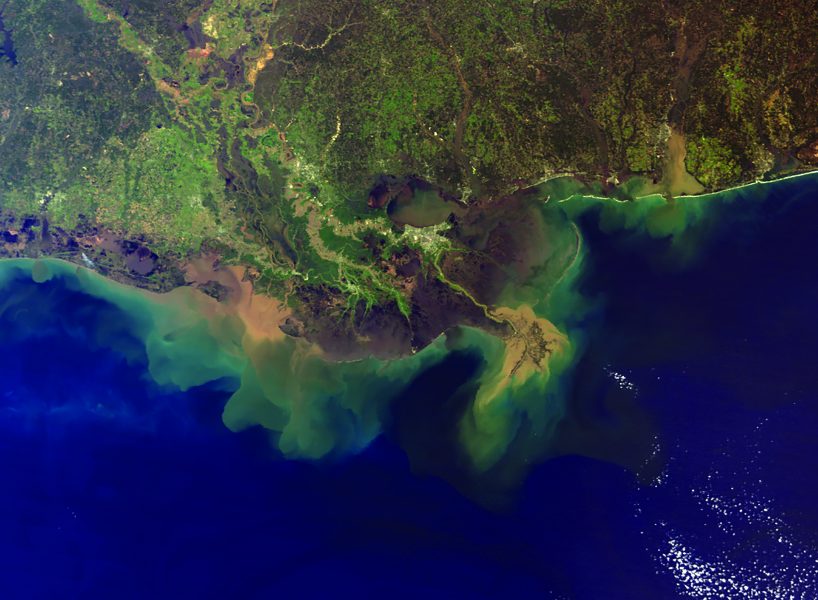Sediment Flip
November 8, 2019

The onset of the most recent ice age about 2.6 million years ago brought big changes to North America. Glaciers covered the northernmost regions of the land, tearing up rocks and soil as they heaved and creeped across the continent. The ice age affected the local climate, too, turning some places that were once wet and rainy into dry and arid expanses.
Researchers found that these changes completely flipped where the western Gulf of Mexico gets it sediments, reducing sediment production in southern Mexico and ramping it up along the catchment of the Mississippi River. The finding adds new insight into how extreme climate change can directly affect fundamental geological processes and how those effects play out across different environments.
The study was published Nov. 1, 2018, in the journal Geology. Angela Hessler, the director of the Deep Time Institute, led the research. It was coauthored by Jacob Covault, a research scientist at the Bureau of Economic Geology; Daniel Stockli, a professor in the Department of Geological Sciences; and Andrea Fildani, a scientist at the Equinor Research Center Austin.
The Gulf of Mexico has been catching sediments transported by rivers for about 200 million years. The layers of sediments that accumulate on the seafloor record information about the origin of the sediments and the erosive processes that lifted them from the rock. In this study, the scientists examined sediments deposited during the 20 million-year transition from the Miocene to the Pleistocene, when the Earth’s climate transitioned from a relatively warm period to an ice age.
Based on the composition of the sediments, the researchers were able to determine that the primary supply of sediments during the middle to-late Miocene came from rivers in southern Mexico, an area in the tropical highlands of Mexico covering about 300-by-500 kilometers. The sediments revealed that what the area lacked in size it made up for with highly erodible conditions, including a wet climate and tectonic activity.
But that environment changed with the global cooling of the Pleistocene, making the highlands dry and arid. And although tectonic activity continued, the lack of precipitation meant that the fresh bedrock and volcanic debris largely stayed in place. In what is now North America, large ice sheets started to form and erode rock as they flowed across the continent.
The study found that this extreme climate shift is reflected by a change in sediments. By the mid-Pleistocene, almost all the sediments in the Gulf of Mexico came from the north via the Mississippi River, which collected sediments from waterways that spanned the continent.
Back to the Newsletter